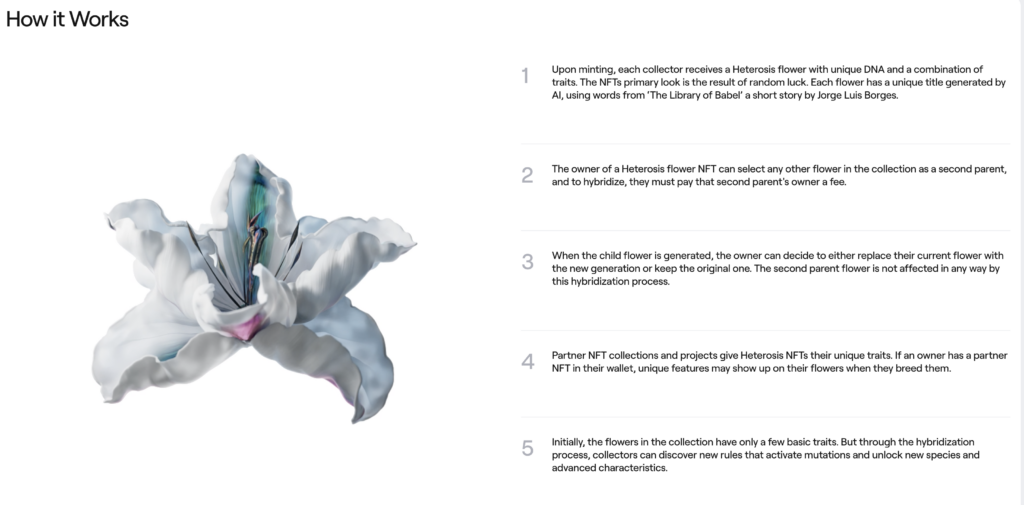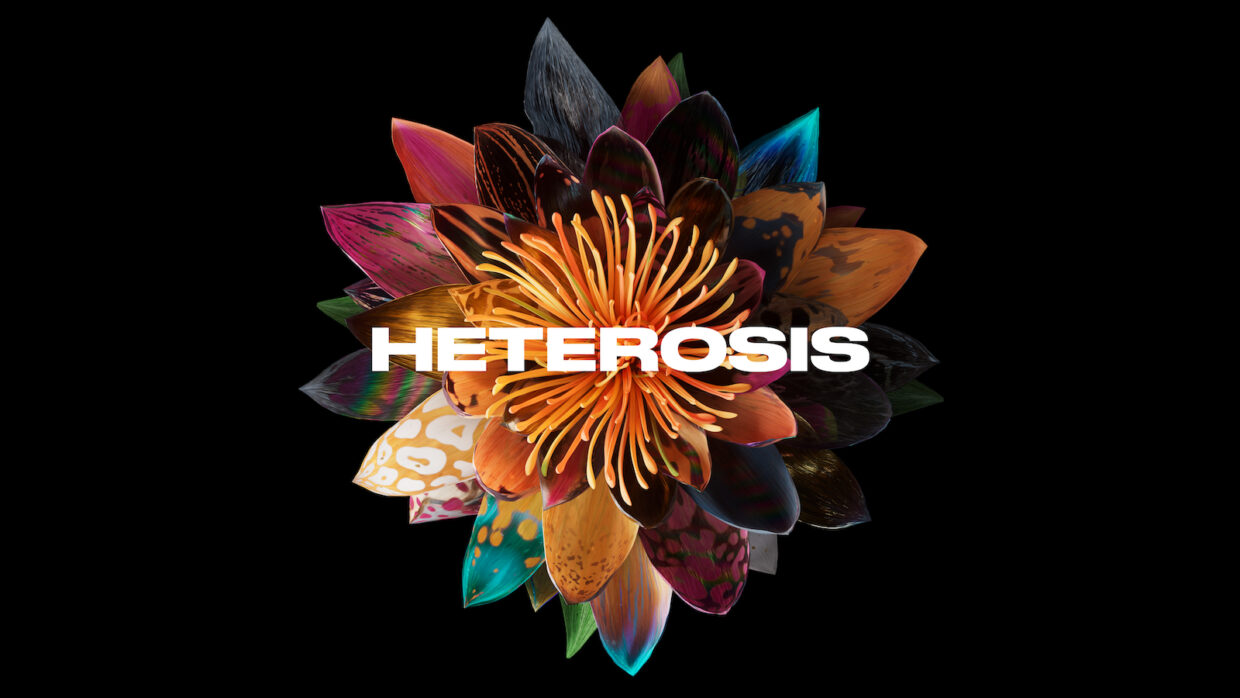Innovation laboratory Snark.art and OG.Art platform have announced Heterosis, a new series of digital artworks and an immersive metaverse experience by Mat Collishaw created in collaboration with digital artist Danil Krivoruchko and metaverse architects EL-GABAL.
The waitlist for Heterosis is open for registration on OG.Art.
Heterosis refers to the increase in characteristics such as size, growth rate and yield of a hybrid organism over those of its parents. The project is composed of two major components – a collection of breedable, dynamic NFT flora and an extraordinary ‘Greenhouse.’ The Greenhouse is a digitally recreated wing of London’s National Gallery, imagined to be abandoned and reclaimed by nature.
The Greenhouse is accessible through a computer browser, mobile phone, or VR sets, with rendering happening in real-time, so any user will receive first-rate images on any device. Collectors entering the environment will create high-quality avatars to freely move through the space as well as see and talk to each other through an inbuilt audio system.
All the digital flowers in the collection will be seen growing among the abandoned, overgrown remnants of this historic building. In Heterosis, collectors become the agents of digital evolution. Operating as breeders or collaborative artists, users can create new species and increasingly exotic and elaborate blooms, either for their own pleasure or to sell.
The digital flowers have been developed using SideFX’s Houdini, a powerful 3D animation and visual effects tool used in blockbuster films, commercials and video games, and have been rendered on Redshift. Each flower is created via a process of hybridization that is not predetermined, requiring advanced technology to generate the dynamic content. This means every flower is completely unique, determined by the interaction of the user with the platform.

Upon minting, each collector will receive a Heterosis flower with a unique combination of traits. The owner of a Heterosis NFT can select any other flower in the collection as a second parent to adopt the traits of the other flower for a new hybrid. When the hybrid flower is generated, the owner can decide to either keep it and replace their current flower with the new generation, or reject it, keeping their original flower.
To hybridize, collectors must pay the second parent’s owner a fee. Collectors will set the prices for hybridization with their flowers based on the rarity of their flower gene combination and the resources and effort invested in it. These dynamics create two separate markets – one for growing and selling rare digital flowers.
Through hybridization, collectors can activate mutations and unlock new colors, flower patterns, species, and other advanced characteristics. When a new beautiful trait is discovered, it can spread across the whole population – mimicking diversification in nature works, but initially, flowers in the collection have only a few basic traits.
What They Said
“I wanted to create an artwork that could not exist in any context other than the metaverse. The digital network that forms the basis of Heterosis allows all the participants and components to come together, bringing the artwork to fruition. The fact that the work can evolve through time, depending on what the owner will or won’t do, was something very interesting for us. Danil managed to encode all the different traits into DNA and designed an evolution process. These mechanics are essential to the Heterosis project and are especially valuable to us as something that’s possible only in a decentralized space.”
– Mat Collishaw
“This is the most complicated digital art collection I have ever worked on. Mat wanted Heterosis NFTs to be real flower species. A real-life reference, which is super complex on the one hand and so familiar to everyone on the other, meant that even the goal of achieving a photorealistic visual was technologically very complex.”
– Danil Krivoruchko



